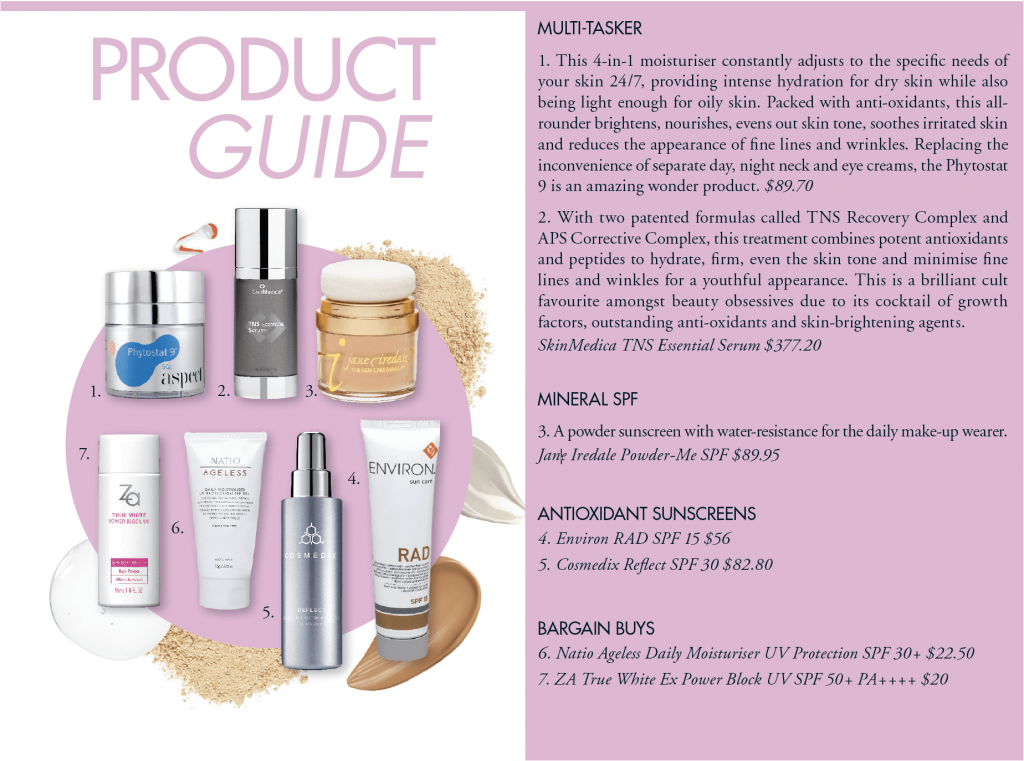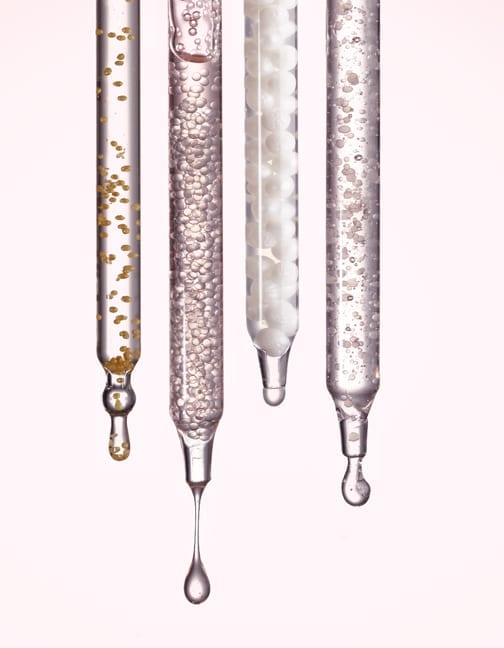Lauren Harding is a true guru in all things related to skin health and aesthetics. With over 28 years of experience in the industry, she has extensive training in skin physiology, IPL, laser, medical needling and advanced peel techniques since acquiring her BTEC National Diploma in Health Science and Beauty Therapy in 1990. Lauren is currently helping me achieve perfect flawless skin that every woman dreams of. She’s the skin team leader of The Face Place MedSpa since 2012 and has shared with us her knowledge in the basics of skin and the nutrition it requires.
What are the factors that damage our skin and how does it destroy our cells?
Some of the major contributors to skin damage are things like smoking, pollutants and one of the biggest contributors, ultraviolet light rays, or UV. UV creates a cascade of damage via the production of free radicals, breaking down collagen and elastin fibres and essential nutrients in the skin.
Free radicals are atoms or groups of atoms with an odd (unpaired) number of electrons and can be formed when oxygen interacts with certain molecules. The free radical often pulls an electron off a neighbouring molecule, causing the affected molecule to become a free radical itself. The new free radical can then pull an electron off the next molecule, and a chemical chain reaction of free radical production occurs. Eventually the accumulation of this free radical process can damage skin cell DNA or the cell membrane, leading to poor cell function or cell death.
The body has a defence system whereby it produces antioxidants. Antioxidants are molecules which can safely interact with free radicals and stop the chain reaction before vital molecules are damaged. Unfortunately this defence system weakens as we age and cannot cope with the constant breakdown of these nutrients. What you potentially see as a result are dark spots a.k.a. hyperpigmentation and/or white patches a.k.a. hypopigmentation where the skin’s ability to produce melanin (the brown pigment that protects our skin’s DNA) is damaged. This results in thinner, reddened skin which is more vascular or sensitised and fine lines, wrinkles and dry skin – all the signs of ageing skin.
What are the basic necessities that our skin requires and what do each of them do?
The basics of any effective skin care regime should include a quality vitamin A serum, antioxidants including vitamin C and a good sunscreen.To truly change the skin we need to replace these nutrients which are broken down on a daily basis by UV exposure. Vitamin A is already naturally occurring in the skin and is responsible for regulating many skin cell functions. Those areas constantly exposed to UV i.e. our face, neck and hands will be chronically depleted in these essential nutrients. By topically applying a vitamin A serum, it enables the skin cell to function normally and when used at relative doses, it can initiate gene transcription, which is a process whereby damaged DNA can be repaired.
Vitamin C helps protect the skin from UV by neutralising the free radical cascade explained above and prevents damage occurring to the skin cell. It also has the capacity to protect against UV rays that penetrate deeper into the skin that sunscreens can’t. Just using vitamin C on a regular daily basis gives an SPF of 8 naturally to the skin. Vitamin C is also an essential ingredient used by the body in the process of producing collagen. It is most effective to use a broad spectrum of antioxidants including vitamins B and E. Often these nutrients work in synergy, maintaining the antioxidant life cycle.
Hyaluronic acid is a key hydrating ingredient used in skincare as it has substantial water binding capabilities. Using vitamin A increases your skin’s natural ability to produce hyaluronic acid but it can also be added to a skin care regime to enhance this process. Cells function optimally in a fluid environment and this is why good hydration is so essential. Hyaluronic acid creates spaces for the passage of nutrients and healthy cell communication.Sunscreen is an essential part of sun protection and this will help ‘screen’ the skin by either absorbing UV or reflecting it. It is important to remember that sunscreens and antioxidants should be used together to get the best protection.
What is the difference between cosmeceuticals and over-the-counter products?
Products bought over the counter tend not to have significant doses of vitamin A and C. This is because when applied incorrectly it is possible that the skin may have a reaction to them, so anything in high doses needs to be administered by a professional that understands your skin, the doses it will tolerate, and how to manage it and your skin prescription to get the best results for you. Unfortunately there is the perception that skin care can’t make radical changes to your skin. However, using cosmeceuticals or ‘active skin care’ can deliver deeper changes to the skin. Our skin is a hugely complex organ. At minimum the skin requires a quality balancing cleanser, vitamin A, antioxidants and a very good sunscreen.
Not many people have a clue about what SPF means and what the number represents, would you be able to explain how it works?
There are many active ingredients used in sunscreens, both chemical and mineral. Chemical sunscreens absorb UV and mineral sunscreens reflect UV. Different ingredients will absorb or reflect UV at different wavelengths making it necessary to use a combination of ingredients to protect you from as many UV rays as possible. A chemical sunscreen will produce its own free radical as a chemical by-product when it absorbs UV: a ‘good’ sunscreen will contain an antioxidant to help neutralise this process. Minerals don’t create a free radical but do not stay on the skin as effectively and will sweat and wipe off more easily. You may want to choose your sunscreen based on your lifestyle and activities you participate in. If you are out in the water or exercising, a combination of chemical, mineral and antioxidant sunscreen would give you the best protection. For general daily use without experiencing significant sun exposure, a mineral sunscreen is best.
You need to reapply sunscreen every 2 hours. A simple way of ensuring you have good UV protection is by using 100% mineral makeup. It’s easy to reapply during the day when you refresh your makeup rather than having to constantly apply liquid sunscreens. Remember that many office lights contain UVA, so you should be using sunscreen all day, every day, whether you are inside, outside or at the office! There is little difference between an SPF 15 and those sunscreens stating higher SPFs. SPF suggests the amount of time you can stay in the sun based on your own burn time, i.e. 15 x longer than your natural burn time. An SPF 15 blocks 94% of the sun’s rays while an SPF 30 blocks 97%. A high SPF can give a false sense of security, as most sunscreens still need to be applied ever two hours to give you the promised protection. Remember sunscreen is exactly that – a screen, not a block, so time in the sun should still be limited.

Words : Sophie Chung

